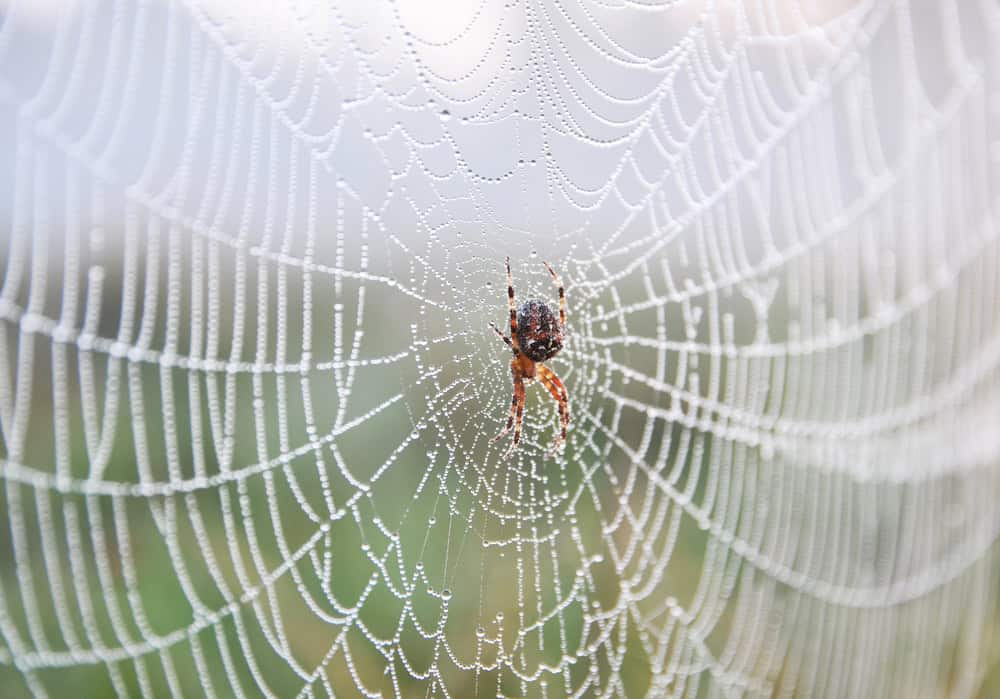Spiders are often misunderstood creatures that inspire fear and awe in equal measure. Popular culture has painted them as dangerous and sneaky, but there’s more to these eight-legged arthropods than meets the eye. In reality, spiders are fascinating and beneficial creatures that play crucial roles in various ecosystems. Let’s debunk some common misconceptions and discover the truth about these misunderstood arachnids.
13. Spiders Are Insects

One of the most common myths is that spiders are insects. In reality, spiders are arachnids, a distinct group of animals that also includes scorpions, mites, and ticks. Unlike insects, which have three main body segments and six legs, spiders have two main body parts and eight legs. Understanding these distinctions is crucial to appreciating their unique place in nature.
12. All Spiders Are Dangerous to Humans

The fear of spiders often stems from the belief that they are all deadly. In truth, out of thousands of spider species worldwide, very few pose a threat to humans. Most spiders are either entirely harmless or possess venom that is too weak to have any significant effect on humans. In fact, many spider bites are no more harmful than a bee sting.
11. Spiders Aggressively Hunt Humans

Contrary to horror movie tropes, spiders do not actively hunt humans. They actually prefer to avoid people and only bite in self-defense, such as when they are threatened or accidentally disturbed. Their focus is primarily on catching prey, like insects, which they help control in the environment.
10. All Spider Bites Require Medical Attention

While it’s true that some people may experience allergic reactions to spider bites, the majority do not require medical treatment. Many bites result in minor symptoms, such as redness, itching, or mild pain, and resolve on their own. However, if you suspect a bite from a potentially dangerous species like the black widow or brown recluse, seek medical advice promptly.
9. Spiders Serve No Useful Purpose

On the contrary, spiders are incredibly beneficial to humans and the environment. They are natural pest controllers, reducing populations of insects like mosquitoes, flies, and agricultural pests. This not only helps prevent the spread of diseases carried by these insects but also plays a vital role in maintaining a balanced ecosystem.
8. Spider Webs Are Sticky All Over

It’s a common belief that the entire spider web is sticky, but only certain threads are designed to catch prey. Spiders cleverly construct their webs with some silk strands coated in a sticky substance to ensnare insects, while others are smooth, allowing the spider to move easily across its web.
7. Spiders Can Lay Eggs Under Human Skin

Folk tales and urban legends depict spiders as laying eggs under human skin—a terrifying thought, but entirely false. The conditions within human skin are unsuitable for spider eggs, and no species of spider exhibits this behavior. Spiders lay their eggs in silk sacs in sheltered locations.
6. Spiders Often Invade Homes During Winter

While it might appear that spiders are invading homes in colder months, the reality is that they’ve likely been there all along. As temperatures drop, people tend to notice spiders more as they become more active inside, especially since we spend more time indoors during these times.
5. Spiders Aren’t Found in Extreme Environments

Spiders are remarkably adaptable creatures and have been found in nearly every corner of the globe, from lush forests to deserts and even frozen tundras. Their resilience enables them to survive in extreme climates through specialized behaviors and physical adaptations.
4. All Spiders Spin Webs

While many spiders do spin webs, not all use this technique to capture prey. Some, like wolf spiders and jumping spiders, actively hunt and pounce on their prey without the use of webs. Others may use silk for different purposes, such as creating shelters or lining their burrows.
3. Spiders Have Poor Eyesight

It’s a common belief that all spiders have poor eyesight, but this isn’t entirely accurate. While some spiders rely on tactile and environmental cues, species like jumping spiders have excellent vision, rivaling that of some mammals. Their acute eyesight aids them in hunting and navigating their environment effectively.
2. Spiders Are Useless in Modern Medicine

Spiders contribute to medical science in various ways. For instance, spider silk is being studied for its potential use in surgery due to its strength and biocompatibility. Additionally, spider venom is being researched to develop new painkillers and treatments for neurological diseases.
1. The Only Solution Is to Kill Spiders

Many people’s first instinct upon encountering a spider is to kill it, but this is unnecessary and often counterproductive. Spiders contribute to controlling pest populations and can be captured and released outside instead of eliminated. Learning to coexist with spiders fosters a healthier environment.
In conclusion, spiders are fascinating creatures fraught with misconceptions that often overshadow their importance and beauty. By debunking these myths, we can better appreciate the vital roles spiders play in our world. Through education and understanding, it’s possible to coexist peacefully with these remarkable arachnids.
- 14 Dangerous Animals That Have Been Spotted in US Backyards - August 20, 2025
- How Leafcutter Ants Use Fungus to Grow Their Own Food - August 20, 2025
- 14 Weirdest Animal Adaptations - August 20, 2025

